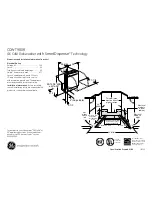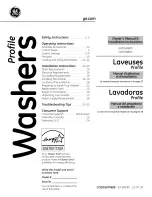
Plumbing
73
The Miele Waterproof system
As long as your dishwasher has been
installed correctly, the Miele waterproof
anti-leak system will protect you from
water damage throughout its lifetime.
Water intake
Water in the dishwasher must
not be used as drinking water.
– The dishwasher must be connected
to the water supply in strict accord-
ance with current local and national
water authority regulations.
– The water used must at least comply
with national regulations for drinking
water quality.
If the water supply has a high iron
content, there is a danger of corro-
sion occurring on items being
cleaned in the dishwasher, as well as
the machine itself.
If the chloride content of the water
exceeds 100 mg/l, the risk of corro-
sion to items being cleaned in the
dishwasher will be further increased.
– In certain regions (e.g. mountainous
regions), the water composition may
cause precipitates to form, requiring
the use of softened water for the
dishwasher.
– UK only: To comply with water regu-
lation requirements, this machine
must be connected to the potable
water supply via the check valve sup-
plied with the machine.
– The water pressure (flow pressure at
the take-off point) must be between
30 and 1000 kPa (0.3 and 10 bar).
If the water pressure is lower than
this, the fault message
Water intake
will appear in the display (see “Prob-
lem solving guide”).
If the water pressure is too high, a
pressure reducer valve must be fitted.
– A stopcock valve with a
3
/
4
inch male
thread must be provided on site. It
should be easily accessible so that
the water supply can be turned off
when the dishwasher is not in use.
– The DN 10 inlet hose is approx. 1.5 m
long terminating in a
3
/
4
inch female
thread. A 1.5 m long flexible metal
extension hose tested to 140 bar
(14,000 kPa) is available as an op-
tional accessory if required. On no
account may the inlet filter be re-
moved.
Summary of Contents for PG 8131i
Page 39: ...Loading the dishwasher 39 Cutlery basket Heavily soiled items ...
Page 91: ......
















































